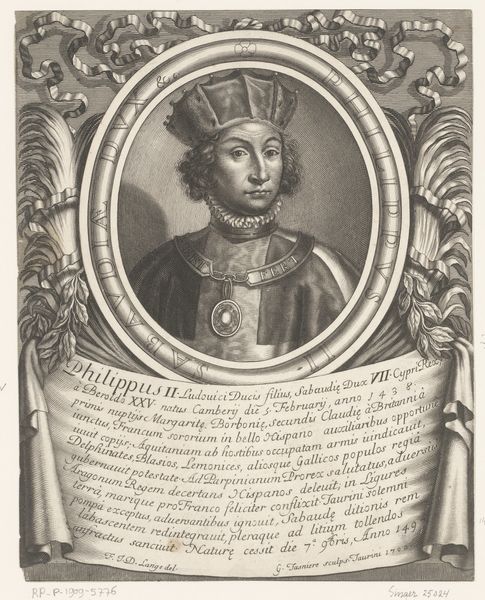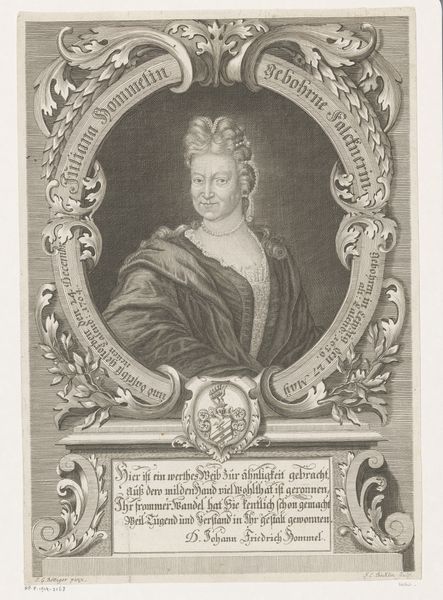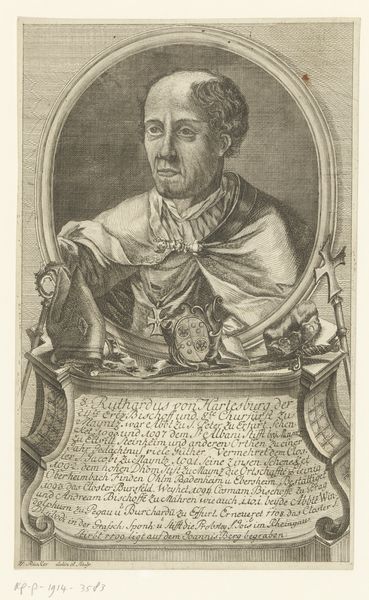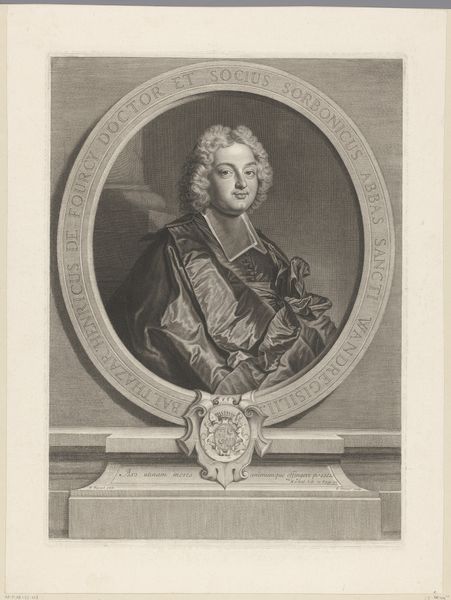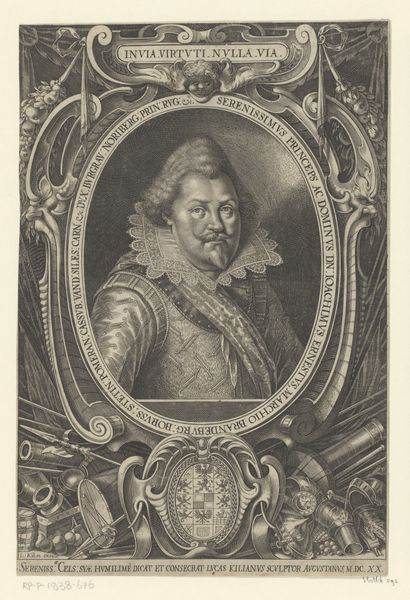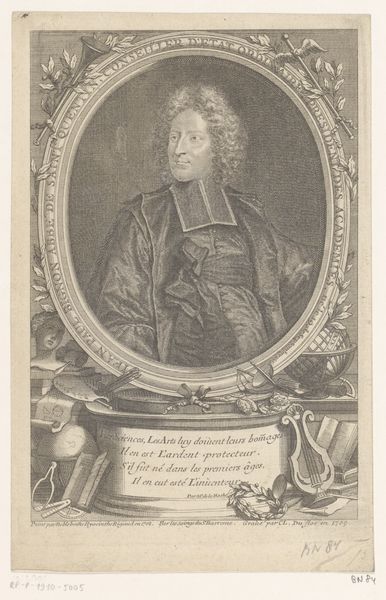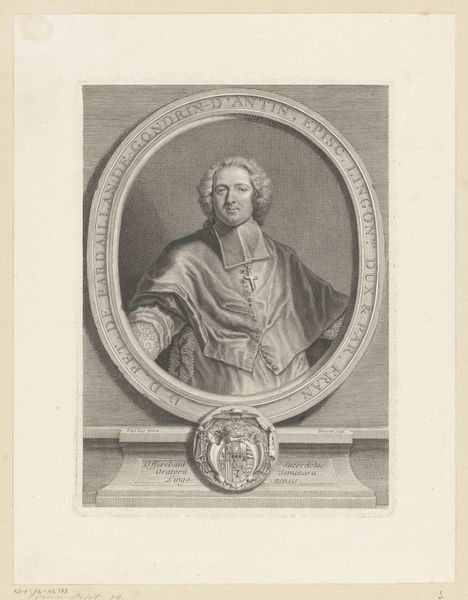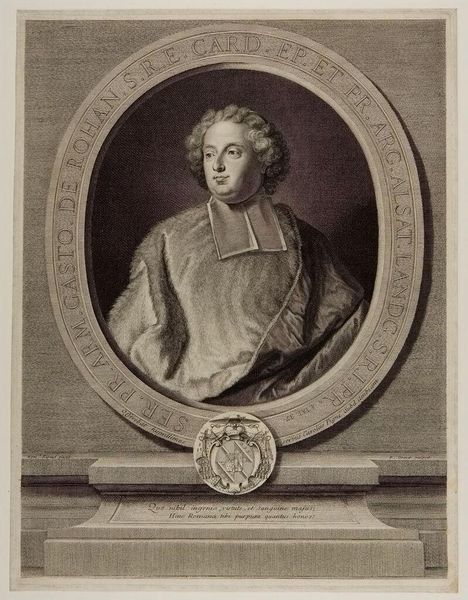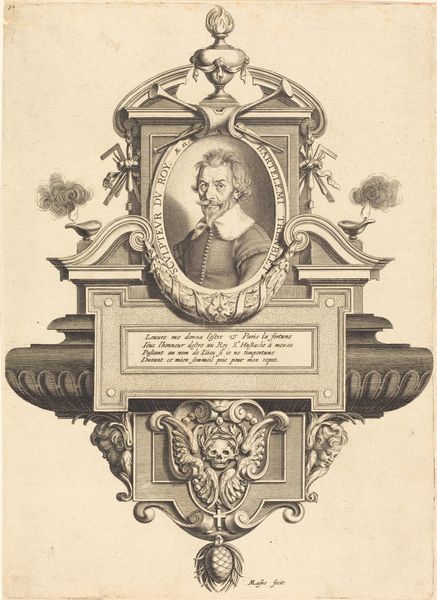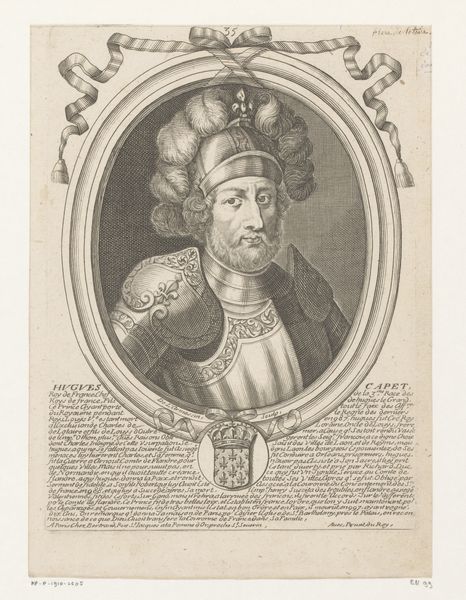
engraving
#
portrait
#
baroque
#
old engraving style
#
line
#
engraving
Dimensions: height 284 mm, width 226 mm
Copyright: Rijks Museum: Open Domain
Curator: Take a moment to observe this Baroque engraving from 1702, titled "Portret van Amadeus VI van Savoye", created by Pierre François Giffart. The artwork, currently housed in the Rijksmuseum, meticulously depicts Amadeus VI. What's your first impression? Editor: The contrast is really striking. The sharp lines of the engraving create a rather stark portrait, particularly against the softer details of the hair and clothing. It feels incredibly formal, even severe, but with flourishes. Curator: Giffart's process emphasizes line engraving, a technique involving cutting lines into a metal plate to hold ink, resulting in those distinctive, crisp lines you noticed. It was a very labor-intensive printing process, requiring skilled artisans, which gives us insight into print production of that era and the relative expense of image reproduction. Consider the engraver’s labor. Editor: Absolutely. You can almost feel the tool scoring the plate. The texture seems important; observe how the lines vary in density to create shading and form. It's all about surface and the distribution of dark and light areas, rather than color, isn't it? The eye is drawn to areas of high contrast. Curator: Exactly. Look at how the inscription at the bottom interacts with the portrait itself. It places Amadeus within a historical and societal context. It isn’t just an image of a nobleman. Editor: That cartouche provides such an anchor, a clear indication of subject and status, but I almost feel the ornamentations distract from it. The ribbons and flourishes frame it. Also, I keep returning to the armor, its reflection indicating both status and… confinement. Curator: Indeed. These symbols of wealth and power are central to Baroque portraiture. They helped to reinforce and communicate societal values and the subject’s role within them. Editor: It is hard not to see, in the end, the piece as a document, its meaning bound up in what it chooses to highlight and leave out. Curator: Precisely. By examining Giffart’s methods, materials, and subject within his contemporary world, we see more than just an old portrait; we understand how identities and messages were constructed. Editor: And through analysis of line, tone and composition, we unravel its intricate design, gaining insights into how the artwork signifies wealth, power and status.
Comments
No comments
Be the first to comment and join the conversation on the ultimate creative platform.


